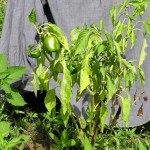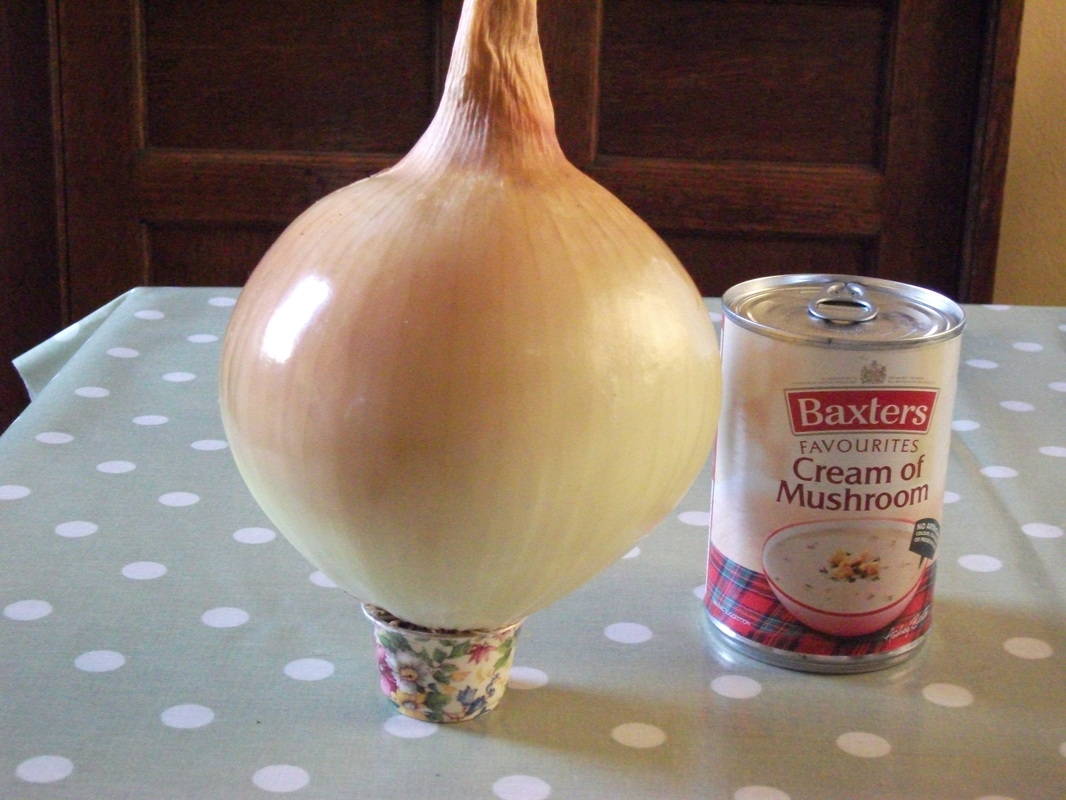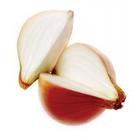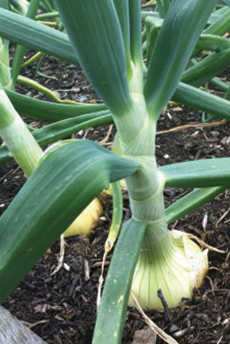| This year I will be trying using seaweed extract (available from the Trading Store) on my onions, having had great success with it last year on leeks. I will also be cutting down on high-nitrate fertiliser and dressing the soil with superphosphate (also available from the Trading Store), in an attempt to produce stronger roots and more disease-resistant foliage. Click here to go to an interesting article on using seaweed extract when growing onions. |
|
Yes, sets are easier, and if you have experienced no disease problems, go ahead. However, experience has shown that seed-grown plants are less vulnerable to basal rot. As far as grey mildew goes, you can choose a mildew-resistant variety such as 'Santero' (shown above). Click on the picture to go to Kings Seeds website, do an online search or check out Wilkinsons or your garden centre.
0 Comments
 Well, it's too late for me. I thought I'd treated them the same as every previous year, when I'd always had good results. In essence, I had treated them the same - but I'd forgotten to take account of the difference a very wet winter makes! Phytophthora is an unpronouncable family of fungus diseases that affect a wide variety of plants - potato blight is just one of them. The fungus which attacks pepper plants lives in the soil, and thrives in damp conditions. My pepper plants are in the ground, and usually I have to water them like billy-ho as the sub soil is, by late summer, sucking up every drop I pour on. This year is different, though! The soil is fully charged with moisture and conditions are ripe for Phytophthora to flourish. The first sign is a branch, or, sadly, a whole plant, suddenly wilting catastrophically. The fungus has got into the tissues near the base and has either traveled up the water tubes or girdled the whole plant, cutting off the supply of water and killing the tissues. The fatal sign is a brown soft mushy-looking section. If only a branch is affected, you may be able to cut ot off and save the rest of the plant. Good luck - mine are doomed, and all because we are so used to dry weather here I never even thought to check about the watering requirements of peppers! What I now know is that I should have let the soil dry out well, till dry two inches down, before watering. Watering every day - essential for tomatoes - is not so good for peppers! The disease stays in the soil, but as I change the soil in my greenhouse beds every year, as well as rotating the crops, I hope to do better next year! For more about preventing pepper blight, click here.  Blight on a tomato. Blight on a tomato. Spells of warm, humid weather mean blight. Blight is a fungus disease, spread by rain and wind, affecting both potatoes and tomatoes. The first signs are small patches of brown on the foliage, with the damaged areas drying and shrinking. Click on the pic (left) to go to the RHS advice page. Blight can be prevented by spraying with Bordeaux Mixture - a post which said Bordeaux mixture was to be withdrawn, on this page, was MISTAKEN - your website compiler was reading info on the RHS website wrong. There have been a number of attempts to withdraw Bordeaux mixture over the years but it is still currently available. If you spray with Bordeaux mixture you will need to re-apply it after rain! On tomatoes, pick off any affected leaves and burn or bin them (don't compost diseased material), spraying with bordeaux mixture to stop it spreading. Tomatoes in greenhouses, protected from the rain, are less vulnerable. If your potatoes have already formed a decent crop - and I don't know about you, but my 'first earlies' are the size of maincrop, while my 'second earlies' rival some of the smaller moons of Jupiter - then you can simply cut off all the foliage and bin it. Thus will stop the blight migrating down to the spuds and you can lift them in your own time. If there is any suggestion that blight might be about, store your potatoes in hessian sacks rather than paper. If you don't have a nice dark cellar (how many of us have one of those?) Then use the sacks double to keep out the light. This disease has been a problem in the past few years. Tips of onion leaves go yellowish, then a grey-white mould spreads down the leaves. Commercially available fungicides don't control it, unfortunately.
To reduce the risk, grow onions from seed not sets. Avoid keeping your own shallots over to plant again the next year (the only onions affected on my patch so far are the shallots I saved from last year to plant). Space plants well apart. If watering, do so early morning not last thing in the evening. Of course, your onions are in this year and none of that advice is any help. You can pick off the affected leaves ( put them out for the black bin rubbish, DON'T compost them! ) and some experienced gardeners say a 'foliar feed' with Bordeaux mixture helps prevent infection. Bordeaux mixture is available from the Trading Store and from the more specialist garden suppliers. Reports it was to be withdrawn were incorrect. |
Kent's climate is drier, hotter and has a longer growing season than the average for the UK. Advice in gardening books may not fit Kent. This blog has local tips on what will grow and when to do garden jobs.
SEND YOUR SEASONAL SUGGESTIONS IN BY USING OUR ONLINE POSTBOX Archives
December 2015
Categories
All
|




 RSS Feed
RSS Feed
